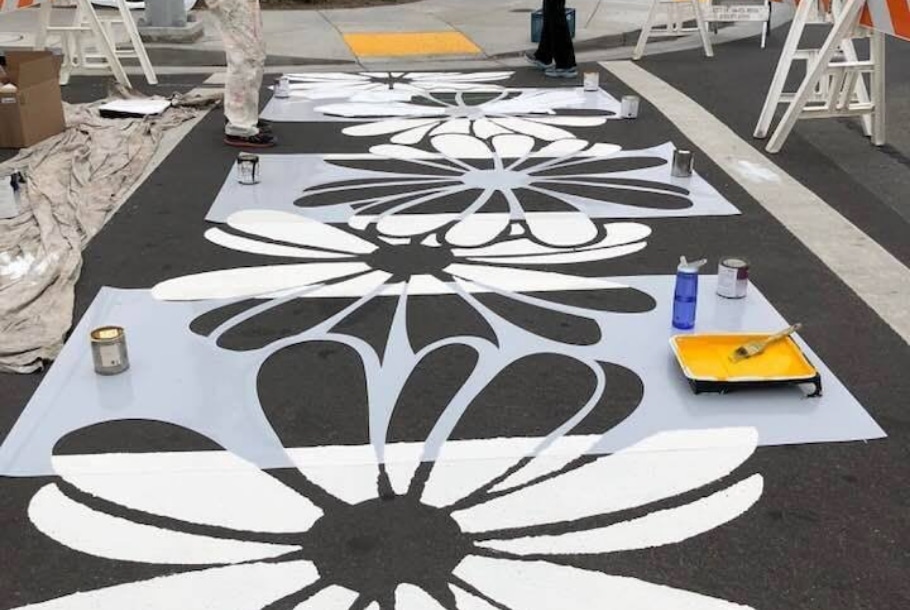Introduction to Custom Stencils
In the world of art, design, and decoration, custom stencils have emerged as an invaluable tool for creating intricate patterns and designs with precision and ease. These stencils are not only a favorite among professional artists and designers but also among DIY enthusiasts looking to add a personalized touch to their projects. Custom stencils can be tailored to meet specific design needs, making them a versatile choice for various applications, from wall art to clothing and beyond.
The Versatility of Custom Stencils
Custom stencils offer unparalleled versatility, enabling creators to explore a myriad of applications. Whether you are working on a large-scale mural or a small craft project, stencils provide the flexibility to achieve consistent and repeatable designs. Here are some popular uses:
Home Décor and Wall Art
One of the most common uses of custom stencils is in home décor. They allow homeowners and interior designers to create stunning wall art, transforming blank spaces into captivating focal points. With custom stencils, you can replicate intricate patterns, geometric shapes, and even large-scale murals with ease.
Textiles and Clothing
Custom stencils are also widely used in the fashion industry. Designers can create unique patterns on fabric, allowing for customized clothing, accessories, and home textiles. From screen printing t-shirts to adding decorative touches to curtains and cushions, the possibilities are endless.
Crafting and DIY Projects
For hobbyists and DIY enthusiasts, custom stencils are a game-changer. They make it possible to personalize a wide range of items, including furniture, glassware, and stationery. Whether you're creating handmade gifts or decorating your home, stencils provide a professional finish that is both satisfying and impressive.
Creating Custom Stencils: The Process
The process of creating custom stencils involves several key steps to ensure the final product meets your specific needs. Here’s a detailed look at how custom stencils are made:
Design Creation
The first step in creating a custom stencil is to design the pattern. This can be done using graphic design software such as Adobe Illustrator or CorelDRAW. The design should be clear and precise, with all elements connected to ensure the stencil remains intact during use.
Material Selection
Choosing the right material for your stencil is crucial. Common materials include Mylar, vinyl, and plastic. Mylar is a popular choice due to its durability and flexibility. Vinyl stencils are great for one-time use, while plastic stencils can be reused multiple times.
Cutting the Stencil
Once the design is ready and the material is chosen, the stencil is cut using a cutting machine like a Cricut or Silhouette. For more intricate designs, laser cutting is often used to achieve high precision. This step requires careful handling to ensure the stencil is cut accurately without damaging the material.
Finishing Touches
After cutting, the stencil edges are smoothed to prevent any rough areas that could affect the application process. At this stage, adhesive backing can be applied if needed, especially for stencils intended for use on curved or uneven surfaces.
Tips for Using Custom Stencils
To achieve the best results with your custom stencils, consider the following tips:
Proper Surface Preparation
Ensure the surface you are stenciling is clean and dry. This helps the stencil adhere properly and prevents paint from bleeding under the edges.
Secure the Stencil
Use painter’s tape or a temporary adhesive spray to secure the stencil in place. This will prevent it from shifting during the application process.
Apply Paint Evenly
Use a stencil brush, sponge, or spray paint to apply paint evenly across the stencil. For best results, apply multiple light coats rather than a single heavy coat to avoid paint bleeding.
Remove the Stencil Carefully
Allow the paint to dry slightly before removing the stencil. Peel it off slowly to avoid smudging the design. If using a reusable stencil, clean it immediately after use to prolong its life.
Benefits of Custom Stencils
Custom stencils offer numerous benefits that make them a preferred choice for artists and designers alike:
Precision and Consistency
Stencils ensure that designs are replicated with precision and consistency, which is particularly important for large projects or multiple pieces.
Time and Cost Efficiency
Using stencils can significantly reduce the time and effort required to complete a project, making them a cost-effective solution for both professionals and hobbyists.
Creative Freedom
Custom stencils provide endless opportunities for creativity, allowing you to experiment with different designs, patterns, and colors to achieve the desired look.
Custom Stencils in Commercial Applications
In addition to personal and artistic uses, custom stencils are widely employed in commercial settings. Here are some examples:
Branding and Signage
Businesses use custom stencils to create branded signage, logos, and promotional materials. This ensures brand consistency and professional quality across all visual elements.
Industrial Marking
In the industrial sector, stencils are used for marking equipment, vehicles, and packaging. They provide a durable and reliable method for applying labels and instructions that withstand harsh conditions.
Event Decoration
Event planners and decorators use custom stencils to create themed decorations for weddings, parties, and corporate events. Stencils allow for cohesive design elements that enhance the overall aesthetic of the event.
Conclusion
Custom stencils are a powerful tool that can elevate any project, whether it's for personal, artistic, or commercial purposes. Their versatility, precision, and ability to transform ordinary surfaces into works of art make them an essential addition to any creator's toolkit. By understanding the process of creating and using custom stencils, you can unlock new levels of creativity and achieve professional-quality results in your projects.





Comments